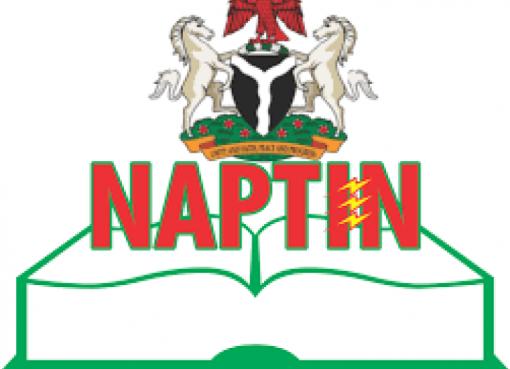The Future For Digital Inclusion Platforms: A New Model For Innovation. The only constant is change,” said Heraclitus the ancient Greek philosopher.
With the unprecedented rate of change happening in the energy sector today should we not update this statement to be more in line with our 21st century reality?
“The only constant is disruption.”
Where there is constant disruption, there must also be constant innovation.
Where once innovation might have been the remit of a particular team or department within utility companies, now it must come from across the organization. CIOs and the IT department are an essential part of the innovation process. How can utility companies’ IT organizations be structured so that innovation can be maximized?
An Application Strategy for Innovation: ‘Pace-Layered Strategy’ Explained
Gartner suggests a ‘pace-layered application strategy’ enables enterprises to innovate. Gartner argues that different applications must be delivered at different speeds. This allows areas where speed is of the essence, in ‘systems of innovation,’ to be delivered more quickly and with more focus on agile and lean methodologies.

Systems of Record’ have much slower and more infrequent rates of change where applications are mainly delivered through a waterfall approach and often result in data silos. In the utility sector, the systems of record include those supporting critical infrastructure and are of primary importance. Other systems of record include metering, billing and asset management.
In between the systems of innovation and record, sit ‘systems of differentiation’. According to Gartner this layer should enable unique company processes or industry-specific capabilities with a medium life cycle (one to three years). At utilities – and particularly at grid companies – the natural monopoly of these organizations means there is no real need for differentiation, hence systems of differentiation are often non-existent.
What’s Stopping Innovation in Utilities?
Newer external factors like integration of Distributed Energy Resources (DER) have placed higher requirements on the quality of delivery and internal factors (increased IT capabilities and cloud-computing) have put a significant pressure on utilities to innovate.
Given that utilities have traditionally focused heavily on systems of record to store critical data that most new innovative services would depend on and with virtually no systems of differentiation in place, how can utilities successfully innovate?
The unfortunate reality is that in many cases they cannot.
Most of the utilities that take the steps to innovate or work with startups in accelerator programs or innovation challenges end up with a number of pilot implementations that never go into production. Why? Simply because these innovative applications rely on access to the data residing in these systems of record and traditional integration approaches involve acquiring middleware and engaging with a system integrator to build a customized solution with a lengthy, costly and high-risk integration project.
The Systems Solution for Grid Companies: A System of Connectivity
Given that systems of innovation need access to data from systems of record, the suggestion would be to re-define systems of differentiation as “systems of connectivity” providing the data processes and data integrations needed to facilitate innovations.
Integration Essential for the Smooth Running of Pace Layers
A pace-layered architecture, based on our experience working with utilities, means the ability to integrate between the slow systems of record and the fast systems of innovation. Where there are shared applications and shared data there must be effective data integrations.
Gartner acknowledges (and suggests) that it is often beneficial for innovation to be led from outside the IT department. However, this can only be successful if data is made accessible throughout the organization to those that are authorized to use it. Data is the fuel of innovation. If there is no access to data, there can be no innovation.
The Three Integration Methods for Utilities
Essentially, the following methods for system integration are available to solve the innovation challenge at utilities.
1.) Direct Integration Between the Application and the Data Sources
Innovation application providers (or the utility itself) can directly integrate the application with the data sources needed. However, this approach is not recommended from an architectural point of view (often referred to as “spaghetti integration”); a security point of view; or a cost perspective. For the future digital utility it is not a feasible option.
2.) Enterprise Integration Bus
Alternatively, and commonly seen within the sector, utilities implement an Enterprise Integration Bus (ESB). These systems are typically a classic middleware or an integration Platform as a Service (iPaaS). A system integrator delivers a custom development project where they establish connectivity, a data model, integration flows, and monitoring to meet specific needs and support mission-critical processes.
Experience has shown that this method of integration can work well for traditional and well-established business processes that do not require frequent changes. However, if new applications are to access data from these systems of record, a new integration project would be needed in each case to build and maintain these integration processes from the ground up. Given the nature of innovation applications and their often-limited scope, this frequently results in innovations applications stalling at the pilot stage.
3.) A New Approach: The Disruptive Integration Model for Utilities
A digital integration hub gives utilities an integration platform that is designed and pre-configured to be the linking layer between systems of record and systems of innovation. These platforms are designed to support most common utility data processes between the systems of records and innovation applications by offering a fast and scalable integration layer that provisions the data with out-of-the-box connectors and a utility specific Data API. Instead of running costly integration projects for every single innovation endeavor at a utility, a digital integration hub empowers innovation, significantly lowers risk and reduces the total cost of ownership based on an Integration-as-a-Service model.
Source: energycentral










